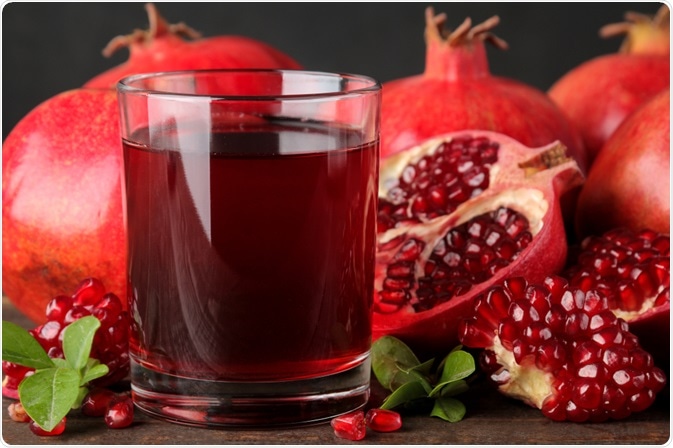What is ATR-FTIR?
Attenuated total reflection (ATR) is an analysis method used with traditional IR spectroscopy, allowing specimens to be examined in either a liquid or solid-state, without additional steps beforehand. FTIR, which stands for ‘Fourier-transform infrared’ spectroscopy, is a method used to obtain an IR spectrum of either the emission or absorption of a gas, solid, or liquid sample.
 Image Credit: Robert Kneschke/Shutterstock.com
Image Credit: Robert Kneschke/Shutterstock.com
Why Use ATR-FTIR in the Food Industry?
The judgment of product authenticity and quality, and therefore the exposure of falsely labeled foods, has become a significant issue within the food industry in recent years and has thus become a cause for concern amongst food manufacturers and consumers alike. Quantifying the quality of foods is complex, involving several biochemical, physical, and physiological factors.
The criteria for observing the biochemical qualities of fresh fruits, and therefore determining quality, include skin and flesh color, firmness, respiration rate, ethylene production, and the content of sugars, pigments, organic acids, volatile and phenolic compounds. Most current analysis techniques needed for quantifying such parameters are expensive, time demanding, and include a significant amount of physical work.
Therefore, there is a requirement for more efficient analysis techniques to determine the quality of food samples. IR spectroscopy is an efficient analytical technique that does not damage the sample in any way and provides a ‘fingerprint’ of chemicals in the sample. The spectral peaks, showing the absorption of the IR beam by the sample, corresponds to the vibration frequencies in-between the bonds of each individual atom in each chemical within the food.
Fourier Transform Infrared (FTIR) spectroscopy was designed to overcome the constraints associated with traditionally used dispersive instruments, therefore measuring every one of the IR frequencies synchronously. FTIR-inspired techniques are reliable, efficient, easy-to-perform, with no pre-treatment of the samples required. Such methods give a straightforward and consistent method approaching the handling of a variety of food products with non-damaging analysis, with the entire sampling and analysis procedure typically taking less than five minutes from start to finish.
Previous studies have proven that these FTIR-based methods, combined with other chemometric methods, can be applied successfully to food industry processes to allow the detection of chemicals that may go on to lower the quality of the food item or have been added in order to claim that a food item is something other than it really is.
Further applications of these methods include the measurement of the lard content in chocolates and cakes, as well as within fat mixtures and adulterations inside olive oil, jam, beverages, and meats. This technique can also be used to check on the aflatoxin levels in cereals (a human toxin made by a fungus), as well as to determine the quality of the coffee.
 Image Credit: MK Studio/Shutterstock.com
Image Credit: MK Studio/Shutterstock.com
Examples of ATR-FTIR Use in the Food and Beverage Industry
With the rising incidence of recalled food-products over recent years, alongside a string of food-fakery incidents, both of which have resulted in significant health and economic costs, the issue of fraudulent food has come under the spotlight with potentially even more damaging consequences coming from global food-supply systems.
A variety of methods have previously been utilized to discover fraudulent ingredients in food. The ATR‐FTIR spectra of certain vegetable oils, for example, is used to determine different categories and varieties of olive oils, and measure how they differ from other oils used in food, such as corn, sunflower, canola, and soybean oils. Furthermore, the capacity to investigate the adulteration of cod‐liver oil with cheaper, easier-to-make oils such as animal fats (for example, chicken fat and lard) using ATR-FTIR techniques, has become vital to the industry to ensure authenticity.
Pomegranate juice can be fraudulently made in a variety of ways. Other juices that are highly concentrated (such as blueberry, blackberry, or aronia), as well as naturally-derived grape pigments, can be combined to resemble the appearance of real pomegranate juice, in combination with poorer quality peel extracts or juices that contain different sugars to give a bold flavor, similar to pomegranate juice.
Legitimate pomegranate juice can be determined by observing a homogenous biochemical composition of sugar profiles, pomegranate polyphenols, amino acids, potassium, and organic acids using ATR-FTIR - an exceptionally useful technique for giving a quick, accurate result of whether a food product is real pomegranate juice concentrate or fraudulent grape juice concentrate.
In conclusion, ATR-FTIR has proven itself to be a useful analysis technique when it comes to confirming the origin and chemical composition of a variety of foods and beverages – especially when it comes to increasingly prevalent ‘food fraud’.
Further Reading